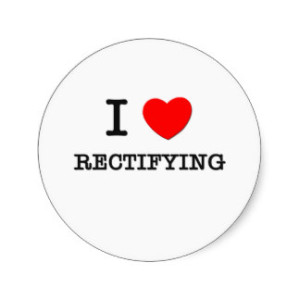Breaking Misconceptions: An Introduction to Eshet Chayil (Part 1)
By Sara Esther Crispe: December 4, 2014: Category Decoding the Tradition, Inspirations
If there is one topic that comes up again and again when I discuss Judaism with others, it is the role of the Jewish woman. The misconceptions are endless and being able to articulate and support the position within Jewish philosophy towards women is something that is always a challenge.
Often it seems that women are seen on one of the two extremes. Either the teachings seem to indicate that we are smarter, more capable, better, greater, etc. and all at the expense of men, or the reverse seems to be the case. But never should one want to be complimented if the condition is that the other—the very other we ideally connect and create with—is then made to seem inferior.
So then where and how do we understand the inherent power and ability of the Jewish woman that does not negate or minimize the essential and important role of the Jewish man? The text of Eshet Chayil, the “Woman of Valor” (Proverbs 31) seems to have it all. Twenty-two verses, corresponding to the Hebrew alphabet, explore, discuss and reveal the potential within each and every one of us and how, when used properly, we can transform our personal lives and the world around us in all the roles that we occupy.
In the Midrash the question is asked, “Who is a kosher woman?” (Tana d’vei Eliyahu Rabbah 9). One of the explanations is that the answer is already embedded in the question for the word for “kosher” can be read “a woman like Sarah” (kesheira = k’Sarah) referring to Sarah our Matriarch, the first Jewish woman. As will be discussed in length in the chapter on the second verse which relates to Sarah, she represented the three primary commandments of the woman and is seen as both a heroine and role model for what we should all aspire to. She embodied the qualities of insight, patience, influence and balance. And while the commentaries allude to the fact that she had even more prophecy than her husband Abraham, nonetheless she was a true partner in life, never using her strength to make him feel inferior but rather to empower him through his unique talents.
The answer provided in the Talmud, however, is a statement that is both controversial and can easily be used or misconstrued to show how women are inferior. The Midrash continues, ‘oseh ratzon ba’alah’ (most often, and yet incompletely, translated as: “she who does the will of her husband”) to the question, “Who is a kosher woman?”
The definition of the infinitive ‘la’asot’ which is where the term ‘oseh’ derives from in the above response is unusual. Generally the meaning of words seem to relate. When the meanings are complete opposites, then it becomes confusing as to what meaning is meant in a given statement or situation. But that is exactly the point. There are times that the right thing to do—the expression of caring or love—can be completely opposite what is was or will be in another situation.
And so too, with the definition of this word. It simultaneously means “to do” or “to make.” Fill that back into our original question, and the response can view women are either incredibly passive or demandingly intrusive. So then who is a kosher woman? Is she the one who does the will of her husband, or the one who makes the will of her husband? Both seem problematic if either one is the only option. In a healthy relationship, there are times that doing what another needs is the best way to respond to a given situation, whereas other times the person is in need of someone to decide, determine or make the result happen.
But there is a greater level altogether, and this is what Eshet Chayil teaches us. This is a meaning that is first explained when this term is used in the opening Torah portion of Genesis which is bereishit in Hebrew, meaning “beginning.” And perhaps that is because the way we want to begin, the way we want to approach a situation, is this way.
In this Torah portion it reads (Genesis 2:3), ‘Bereishit barah la’asot’ meaning that in the beginning the world was created…to do / to make. And both are true. We were created to do what needs to be done in this world and simultaneously to create and make through innovating and going beyond what is already there for us to work on. But the foremost commentator, Rashi (Bereishit Rabbah 11:7), explains that the highest level is more than that. He explains that ‘la’asot’ should be understood as “to rectify.” The world was created for us to rectify. And so too, that is the approach we should have within our own lives and in our relationships.
When we ‘do,’ we work within the construct and reality of what already exists. When we ‘make,’ we deconstruct and ignore what is there and create from anew. But when we ‘rectify,’ we recognize the potential, the ability, the hidden goodness, and we work from within to reach an end result that is positive and productive. Rectifying does not negate what is there but rather reveals what could be from what is. That is our role in this world.
Of the 19 women discussed (the last 3 verses are all connected to the same woman), many are very well known while others are extremely obscure, with a few not even named or even mentioned explicitly in the text. Yet all teach lessons in character development and potential, each in their own way. And each shows how ordinary women can do extraordinary things. The one woman who is strikingly missing is the first woman in creation, name Eve in English but Chavah in Hebrew. (Interesting enough, Eve is etymologically related to “evil” whereas Chavah is related to “life” and “experience.”) Being that her name relates to that of our experience in life, she is embodied throughout. This is understood in that the number 19 is the numerical equivalent of her name, relating to the 19 women who are described. So while Chavah does not have a verse, she has all the verses.
 While the text of Eshet Chayil focuses on the lives and lessons of these 19 women, the messages embodied and embedded within are universal and essential for anyone seeking growth, self development and a heightened understanding and empathy within one’s relationships. And most importantly, these women don’t represent superhuman potential or goals that are unrealistic or unattainable to the average woman. More so, we all have the potential within—sometimes it just is waiting to be revealed.
While the text of Eshet Chayil focuses on the lives and lessons of these 19 women, the messages embodied and embedded within are universal and essential for anyone seeking growth, self development and a heightened understanding and empathy within one’s relationships. And most importantly, these women don’t represent superhuman potential or goals that are unrealistic or unattainable to the average woman. More so, we all have the potential within—sometimes it just is waiting to be revealed.
Perhaps that is why the entire text of Eshet Chayil is in total 150 words. This number, when represented in Hebrew letters, comprises the two first letters (Nun and Kuf) in the Hebrew word for ‘female,’ ‘nekeiva,’ which is of a Nun, Kuf, Beit and Hei. Beit and Hei on their own mean “within her.” So ultimately, the word ‘female’ can be read as “there are 150 within her” meaning that all 150 words of the text of Eshet Chayil are within her. Within each and every woman!
In Part Two we will introduce the first verse and the meaning embedded within.
Breaking Misconceptions: An Introduction to Eshet Chayil (Part 1),























;)
;)
;)
;)
;)
;)
;)
;)
;)
;)

Great. Loved the class. The book will be even better. Mazal tov!
Beautifully written! Yasher Koach!